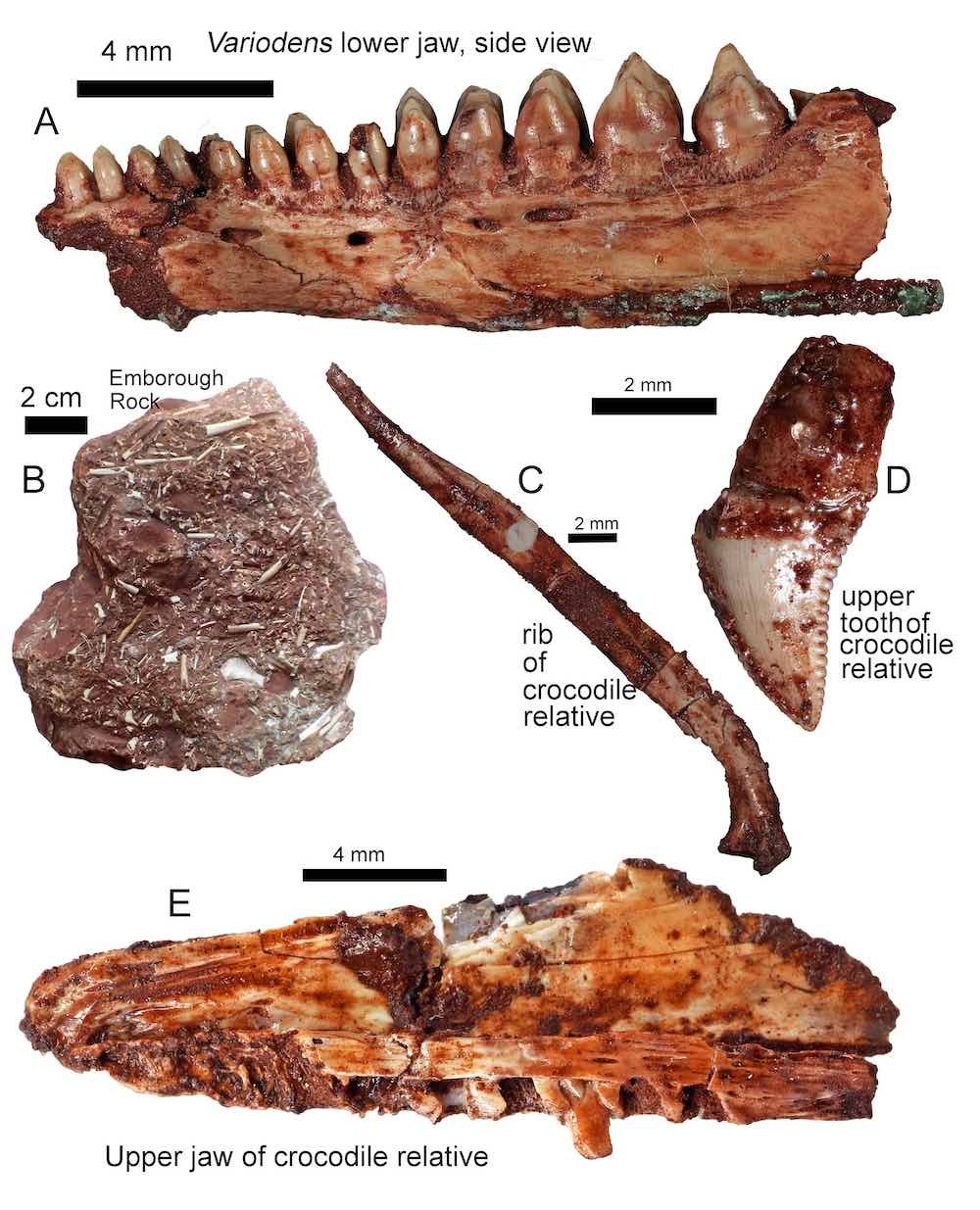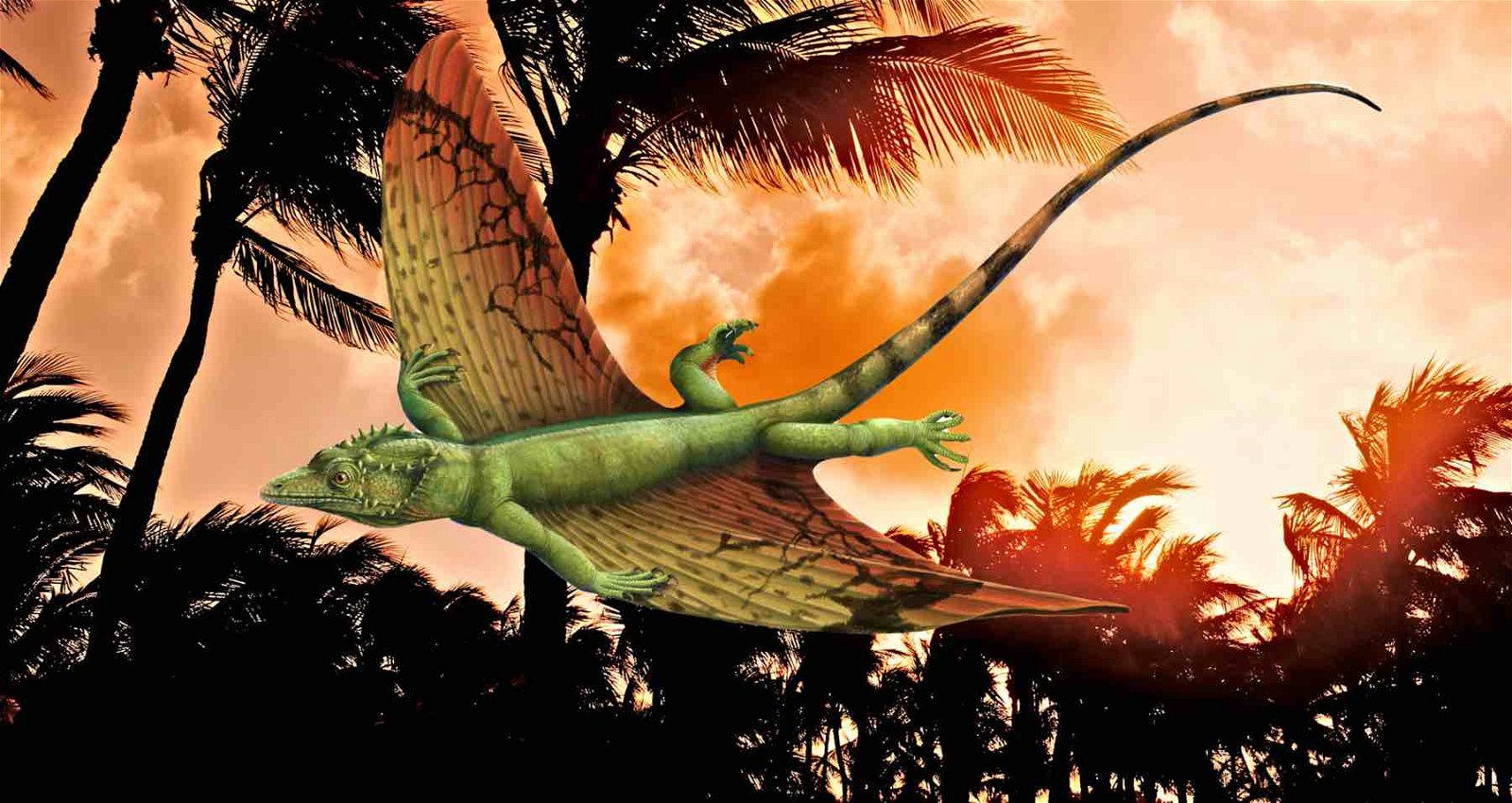On an ancient subtropical island that once existed near modern-day South West England, a species of winged creatures that closely resembled tiny dragons once thrived, new research has revealed.
Researchers with the University of Bristol involved with the discovery say the creatures, known as Kuehneosaurs, were small enough to fit in your hand, although these tiny, winged beasts were relatives of modern crocodiles and dinosaurs.
These pint-sized “dragons” came in two varieties, one possessing a large set of wings, the other much smaller ones, which were made of skin stretched across their elongated side ribs that allowed them to glide short distances from the treetops where they resided.
Land of the Dragons
Although many ancient traditions from around the world include dragons, English folklore featured several unique varieties that included poisonous, serpent-like beasts that possessed no wings, as well as winged monsters such as the wyern, which in addition to wings also possessed two legs and a barbed tail.
Near Somerset, one legend tells of such a beast, known as Blue Ben of Kilve, who according to tradition used the devil as his steed. Among the fossil discoveries from the region is the skull of an ichthyosaur which, today said to be residing in a local museum, is sometimes associated with Somerset’s famous dragon.
About 50 million years after the ichthyosaur would have lived that English tradition now likens to the once-dreaded Blue Ben, the Mendip Palaeo-island was the largest of several ancient sub-tropical islands that spanned a region between Frome and Weston-super-Mare.
Today, fossils recovered from limestone quarries in the area reveal what the island’s ancient reptilian residents were like. In comparison to the ancient aquatic ichthyosaurs, the tiny gliding Kuehneosaurs lived very much like Draco, a modern southeast Asian species of flying lizards, by subsisting off insects both on the ground and in trees and gliding between treetops across distances of as much as ten meters.
Discovering Dragons in England’s Fossil Beds
England’s newest species of fossil dragons were discovered by Mike Cawthorne, a master’s student at the University of Bristol, who came across the creature’s remains while studying reptile fossils collected from Southwest England’s limestone quarries.
Along with Kuehneosaurs, several other varieties of ancient reptiles that once thrived on the Mendip Palaeo-island, or in the waters surrounding it, were also discovered. Among the other species that were documented were a variety of lizard-like trilophosaurs called Variodens that possessed a complex array of teeth, as well as an aquatic species, Pachystropheus, which researchers say subsisted in ways similar to modern otters.


“I had hoped to find some dinosaur bones,” Cawthorne admits, although the discoveries he made were all of smaller beasts, retrieved from collections that date back to as early as the 1940s when the region’s quarries were still active.
“The bones were collected by some great fossil finders in the 1940s and 1950s including Tom Fry, an amateur collector working for Bristol University and who generally cycled to the quarries and returned laden with heavy bags of rocks,” said Dr David Whiteside of Bristol’s School of Earth Sciences.
Other collectors that contributed to the collection were Walter Kühne, a German national who had been imprisoned while in Britain during World War II, as well as Pamela Robinson of University College London.
“They gave their specimens to the Natural History Museum in London and the Geological collections of the University of Bristol,” Whiteside said.
Small Discoveries, But NO Small Task
Identifying the remains of the tiny dragon-like Kuehneosaurs and their other fossil kindred was no small task, since many of the remains Cawthorne studied had been disarticulated fragments, rather than completely preserved skeletons.
“However, we have a lot of comparative material,” said Professor Mike Benton of Bristol’s School of Earth Sciences. Benton says the university’s collections allowed Cawthorne “to compare the isolated jaws and other bones with more complete specimens from the other sites around Bristol.”
Although Cawthorne only succeeded in locating the new species of tiny dragons and other small reptiles that once thrived on the island, the fact that no dinosaur bones were discovered is not evidence of their absence during the period.
“[I]t’s likely that they were there because we have found dinosaur bones in other locations of the same geological age around Bristol,” Professor Benton said in a statement.
Despite not having found any evidence of ancient monstrous reptiles in the fossils he studied, Cawthorne still managed to find a few of England’s ancient flying dragons, albeit fairly small ones.
The new findings were published this week in Proceedings of the Geologists’ Association, in a paper titled “Latest Triassic terrestrial microvertebrate assemblages from caves on the Mendip palaeoisland, S.W. England, at Emborough, Batscombe and Highcroft Quarries” by M. Cawthorne, et al.
Micah Hanks is the Editor-in-Chief and Co-Founder of The Debrief. He can be reached by email at micah@thedebrief.org. Follow his work at micahhanks.com and on X: @MicahHanks.

